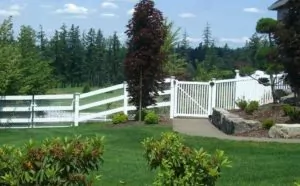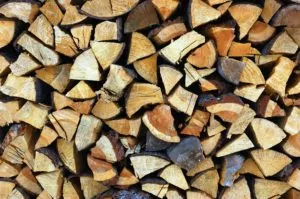This time of year, you might be getting your garden tilled, planted, and ready to go for the season. After the time and energy you spend prepping the area, you want everything to grow successfully so you can reap the rewards. One of the best ways to make this happen is by building a garden fence.
Does my garden need a fence?
Garden fences add a measure of security, keeping larger critters out of the area. Whether it is your family dog, the neighborhood cat, rascally raccoons, or a wild rabbit, animals of all kinds can cause harm to your garden. Either by eating your bounty or just tearing up the soil.
First, think about what types of animals you are trying to keep out, as this will determine how high your fence should be. If you have rabbits, a chicken wire fence should help. But for larger animals, a higher, sturdier fence may be better. Depending on the size of your garden, and what you’re growing, you may consider hiring a professional fencing contractor.
How Much Room Will I Need?
Creating a fence around the outer part of your garden gives it a defined space with exact dimensions. This gives you a great visual of how much space you have to work with when it comes time to plant vegetables, fruits, plants, or shrubbery.
And don’t forget you’ll need access to all of your garden beds. You’ll want to make sure you have room to water, weed, and eventually pick the fruits (or vegetables) of your labor. If space is a concern in your yard, you may want to scale back just how big a garden you want or become more efficient with space.
Enhance the look of your yard
A beautiful fence can enhance your garden space and create even more points of interest on your property. There are a variety of different fence styles to choose from, too. Wood, iron gates, vinyl, and chain link fences are just the beginning.
In addition to the fencing, think about the look of your raised beds. Pressure-treated wood for the corner posts and corrugated metal for the sides a sleek, trendy vegetable garden look right now. Are you going to want your DIY garden fence to match that look?
Preparing the garden space
The first step in building a simple garden fence is marking off the dimensions. This will give you an idea of how much material you’ll need to buy. Even a small picket fence will need corner posts, rails, nails or screws, brackets, and other supplies. Using a post every six feet is a good rule of thumb for yard fencing, so that’s a good baseline.
It’s a smart move to level the area if you’re planning on an all-wood slat fence. While you don’t want animals to get under the fence, you won’t want the wood to be touching the ground, either. That’s not as much of a concern with welded wire or metal fencing of course.
Start Construction
Once the area has been prepped, grab a post hole digger and dig down at least one foot. The deeper you go the more stable the fence will be. The fence posts around your yard are a minimum of two feet deep, but if your fence is only a few feet high, that could be overkill.
After placing and leveling the corner posts, pour cement into the holes to help protect them from the earth and provide stability. Let the concrete cure overnight to ensure strength. Once hardened, add rail brackets near the top and bottom of the corner posts to hold the rails in place. Make sure to use a level so the brackets are even with their corresponding brackets on other posts.
Using metal posts? The same principles apply, although make sure you understand how the brackets are affixed to the posts. With wood, you can use nails or even deck screws to hold them in place. Place the rails into the brackets and nails into place.
From there, you’ll affix the slats, chicken wire, or whatever material you’ve chosen to use. Nails for slats, staples for barbed wire, and so on. In some cases, you can even buy sections of vinyl fencing to remove this step. You’ll still need the corner posts of course.
Don’t forget the gate! If your fence is small enough to step over, this may not be a concern. But a gate offers easier access to the garden and you won’t need to worry about tripping on your way to your tomatoes, green beans, peppers, and other produce.
Work With Fencing Professionals
There are a variety of fence ideas to choose from when it comes to your garden. And while smaller garden fences are available already put together, if you; ’re looking for something more stable, it’s best if you have experience with tools and construction projects
Not feeling particularly handy? Reach out to Pacific Fence & Wire. Our experts will provide choices for you that fit your style preferences and most importantly, your budget. We will talk to you about what you’re growing too, to ensure the fence and your garden work hand in hand. So, if you are ready to talk about your fencing options, contact our team at Pacific Fence & Wire to learn more about getting your project started.





